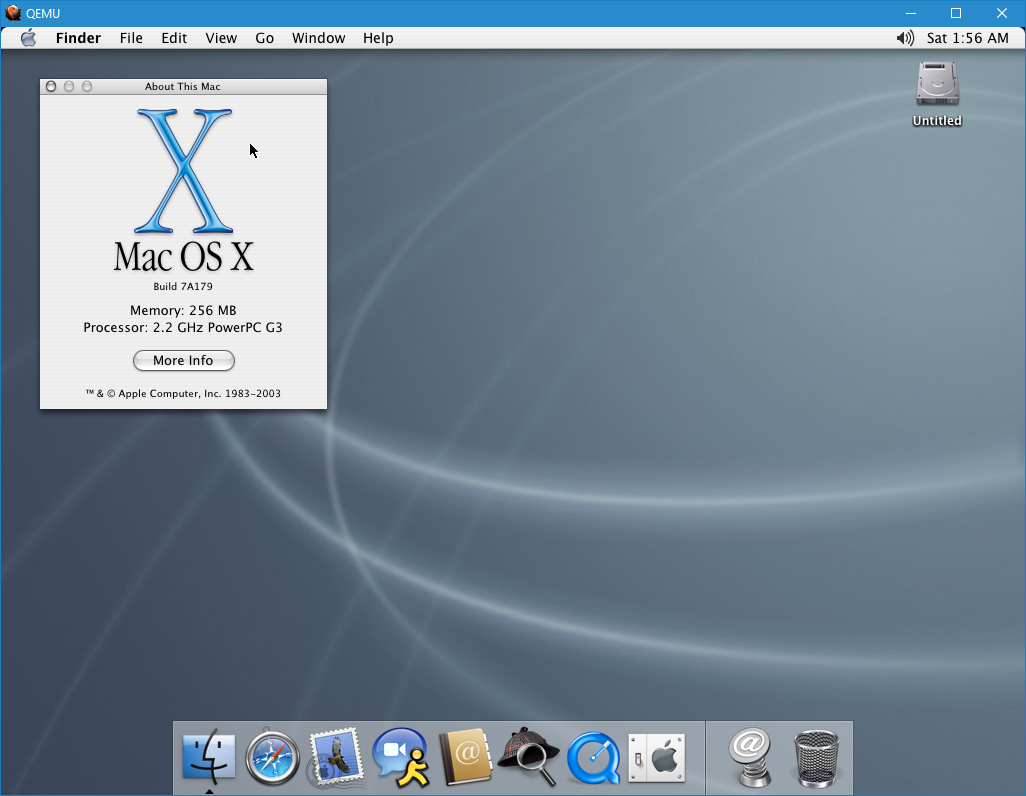


- Mac os x yosemite for g3 for mac os#
- Mac os x yosemite for g3 mac os x#
- Mac os x yosemite for g3 mac os#
- Mac os x yosemite for g3 manuals#
- Mac os x yosemite for g3 windows#
In 1999, Apple released Mac OS 9 as the last classic Mac operating system.
Mac os x yosemite for g3 for mac os#
Jobs had spearheaded the move to a UNIX-based OS called NeXTSTEP while at NeXT, and when Apple purchased the company, it also brought over the basis for Mac OS X. With Steve Jobs back in charge at Apple, the company began to work in earnest on a replacement for the dated operating systems. Mac OS 9: The last “Classic” Mac operating system Probably the most significant change was to the Mac file system, as Mac OS 8 introduced HFS+, the file system used in macOS up to version 13 “High Sierra” when APFS arrived. True multi-threading appeared, allowing file system operations to happen in the background. Mac OS 8 was quite popular, primarily because Mac users had been hungering for a replacement to System 7. Mac OS 8 Desktop, featuring Microsoft Internet Explorer as the internet browser Jobs had it renamed in order to take advantage of a legal loophole and stop third-party licensing to clone manufacturers. It was originally supposed to be called Mac OS 7.7. Shortly after Steve Jobs returned to Apple from his NeXT adventure, Apple released Mac OS 8. With Mac OS 7.6, Apple dropped the “System” designation as it was trying to drum up support for the Mac operating system on third-party Mac clones. AppleScript is part of today’s Automator and offers a way to automate operating system and app functions.Ībout this time, Apple started using PowerPC processors in the Mac line. It was a big improvement over earlier versions, offering more stability, virtual memory support, cooperative multitasking through MultiFinder, and the AppleScript scripting language. Of all of the original System releases, I remember System 7 as being the most long-lived. System 6 also brought support for the Motorola 68030 CPU and the 1.44MB SuperDrive floppy. That bootable diskette was a direct ancestor of the Disk Utility we still use today. One of these diskettes, “Disk Utilities 1”, came with Disk First Aid and HD SC Setup.
Mac os x yosemite for g3 manuals#
For $49, users got three manuals and four diskettes. System 5 and 6Īpple began charging for operating system upgrades with System 5. ADB also worked with adapters to connect Macs to AppleTalk networks. It also supported Apple Desktop Bus, used for many years to connect keyboards, mice, and other devices. System 4.1 was notable in that it supported the Motorola 68020 CPU, expansion slots, and color display of the Macintosh II. System 3 brought 800K startup drives, SCSI for connectivity to scanners, printers, and storage, AppleShare (early networking and file sharing). For example, System 2 brought multiple folders and screenshots (Command – Shift – 3), while System 2.1 added support for the Apple Hard Disk 20 (that’s 20MB, not GB…). System 1 through System 4 (1987) offered a few enhancements along the way.
Mac os x yosemite for g3 windows#
Overlapping, resizable windows the Finder, folders, a mouse-controlled pointer, the Trash can, and the top menu bar anchored by the Apple icon. In the two years that the Lisa was on the market, it sold only 10,000 units.Īs crude as the System 1 desktop looks in the screenshot above, it introduced many concepts that still exist in macOS today. Apple had released the Lisa with a GUI in 1983, but it was ridiculously expensive ($9,995, equivalent to almost $26,000 in 2020 dollars), slow, and used unreliable floppy disks coupled with a 5 MB hard disk drive. It was the first popular consumer OS to use a graphical user interface. For those of us who were around at the time the first Mac was released, System 1 was a revolutionary operating system.
Mac os x yosemite for g3 mac os x#
On that day, twenty years ago, Apple introduced the next generation of the Mac operating system – Mac OS X 10.0 “Cheetah.” The introduction was no small matter, as it marked a change in how Macs work that remains up to this day with macOS 11 “Big Sur.” Let’s take a look at the history of Mac operating systems from 1984 until now, starting with the “Classic” operating system introduced in 1984 and ending with Big Sur.Īt the beginning (1984), there was System 1. March 24, 2001, was a banner day for Mac users.


 0 kommentar(er)
0 kommentar(er)
